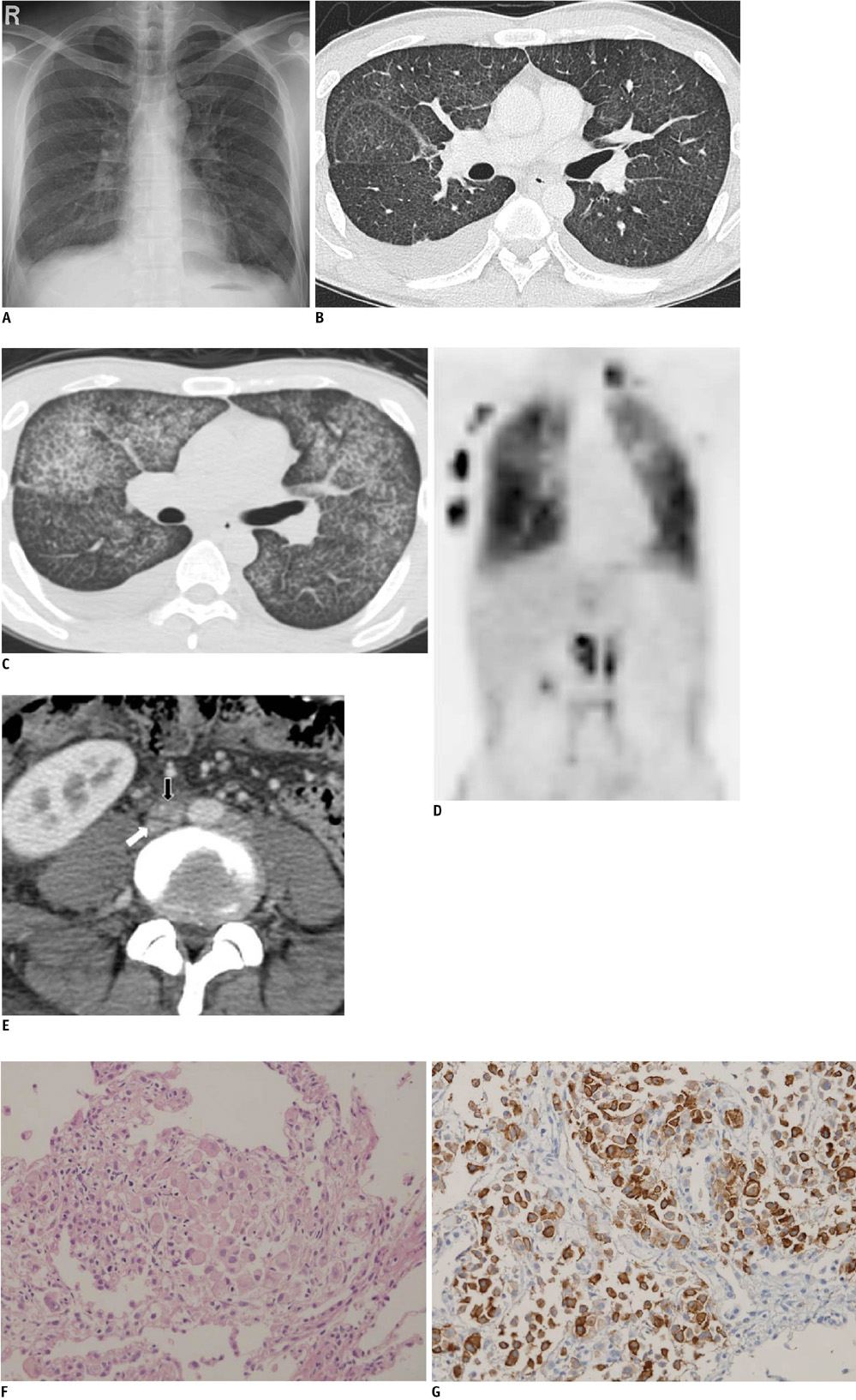Korean J Radiol.
2011 Apr;12(2):252-255. 10.3348/kjr.2011.12.2.252.
Diffuse Interstitial Infiltrative Lung Metastasis of Malignant Melanoma: a Case Report
- Affiliations
-
- 1Department of Radiology, Severance Hospital, Yonsei University School of Medicine, Seoul 120-752, Korea. iamotwo@yuhs.ac
- 2Department of Pathology, Severance Hospital, Yonsei University School of Medicine, Seoul 120-752, Korea.
- KMID: 1088572
- DOI: http://doi.org/10.3348/kjr.2011.12.2.252
Abstract
- A diffuse interstitial infiltrative pattern of lung metastasis in a patient with malignant melanoma is rare and can be confused with benign conditions such as pulmonary edema or drug-induced pneumonitis. We experienced a case of diffuse interstitial infiltrative lung metastasis in malignant melanoma in a 37-year-old man. This case was confirmed by a transbronchial lung biopsy. We herein describe the findings on CT and positron emission tomography scan.
Keyword
MeSH Terms
Figure
Reference
-
1. Lee YT. Malignant melanoma: pattern of metastasis. CA Cancer J Clin. 1980. 30:137–142.2. Webb WR, Gamsu G. Thoracic metastasis in malignant melanoma. A radiographic survey of 65 patients. Chest. 1977. 71:176–181.3. Dwyer AJ, Reichert CM, Woltering EA, Flye MW. Diffuse pulmonary metastasis in melanoma: radiographic-pathologic correlation. AJR Am J Roentgenol. 1984. 143:983–984.4. Chen JT, Dahmash NS, Ravin CE, Heaston DK, Putman CE, Seigler HF, et al. Metastatic melanoma in the thorax: report of 130 patients. AJR Am J Roentgenol. 1981. 137:293–298.5. Akira M, Ishikawa H, Yamamoto S. Drug-induced pneumonitis: thin-section CT findings in 60 patients. Radiology. 2002. 224:852–860.
- Full Text Links
- Actions
-
Cited
- CITED
-
- Close
- Share
- Similar articles
-
- DILD (diffuse infiltrative lung disease); Radiologic Diagnostic Approach According to High-Resolution CT Pattern
- Diagnosis and management of primary malignant melanoma of the lung: a case report
- A Case of Unknown Primary Malignant Melanoma with Pulmonary and Endobronchial Metastasis
- Surgical Resection of Metastatic Choroidal Melanoma in the Rib and Bronchus: A case report
- Esophageal Metastasis of Malignant Melanoma in a 66-year-old Female Patient


